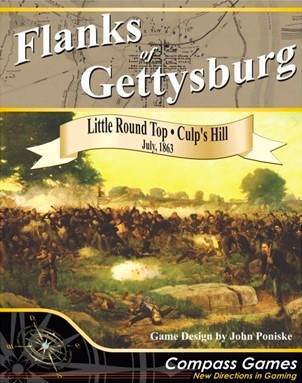The seeds of John Poniske’s love of history were sown in the land of Lincoln. Poniske grew up in Springfield, Illinois, the same place Abraham Lincoln lived as an adult. In Springfield, Lincoln honed his skills as a lawyer, orator, and future statesman before traveling to Washington, DC, in the spring of 1861 to assume his leadership as the 16th President of the United States.
John Poniske also left Springfield to embark on successful careers as a U.S. Marine, journalist, and teacher. Through these experiences, Poniske honed his talents and forged his creative identity. Along the way, he discovered the power of history to teach and inspire cultural reflection. Today, Poniske’s work interprets the enormous challenges faced by leaders like President Lincoln, while also examining the past struggles and triumphs of ordinary Americans.
Poniske is an exceptional writer. His intellectual imagination has not only produced descriptive stories in multiple books, but has also contributed to the creation of a history-based board game that illustrates and interprets famous battles with maps and military strategies. With this rare skill set, John Poniske brings history to life.
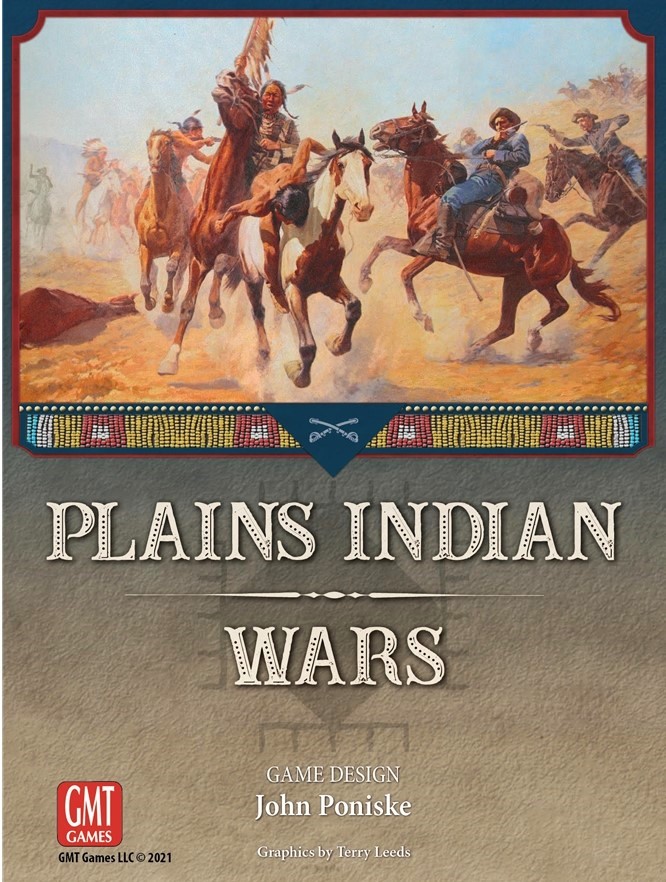
In the mid-1990s, Poniske began working as a military game designer. Several publishers have brought his ideas to life, encouraging modern armchair generals to test their combat skills. Poniske’s games include Lincoln’s War, Ball’s Bluff, Bloody Kansas, Plains Indian Wars, and, released this year, Gettysburg Flanking. In this latest board game challenge, the Confederate side is given a new chance to flank the Union army in the rugged Gettysburg terrain, giving players a chance to revisit history and, potentially, change it.
During his prolific career, Poniske has created over 20 games, with more designs to be released. But after retiring from teaching in Hagerstown, Poniske looked for a new outlet for his talents; he wanted to write historical fiction. “Military games are a great way to learn about history,” he says. “Designing them is what got me started on writing. I wanted to create stories that would make people want to dig deeper.”
With a bachelor’s and master’s in history, Poniske came from a unique background and quickly embarked on an ambitious novel-writing project. The idea came to him while hiking in the Appalachian Mountains, when he noticed a sign that read, “Watch out for Timber Rattlers.” The Civil War came to mind, and “I realized I needed to be careful of harmful ideas, too,” Poniske recalls.
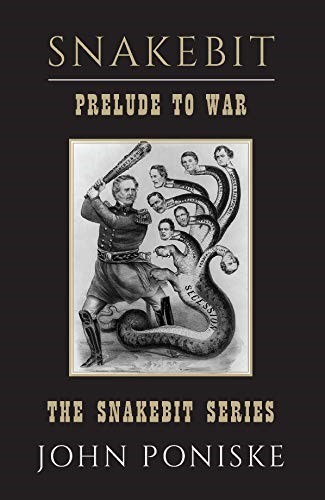 Prelude to War is the first book in the Snakebit series by John Poniske.
Prelude to War is the first book in the Snakebit series by John Poniske.
The idea for “Snakebit” was born that day. Poniske decided to write a history book series with the title, centered around two fictional Maryland families. “I wanted to convey the idea that our current political malaise is rooted in the divisions that arose just before, during and after the Civil War. Using the historical record as an outline, readers can experience our history with details they’ve never heard before.”
In Snakebit’s first book, “Prelude to War,” Poniske introduces us to fascinating characters through a series of historical vignettes. The pro-slavery Garrett family quarrels with their slave-owning neighbors, the McCunes. As the adventure continues, the various families encounter runaway slaves, debate abolition, and meet campaigner Abraham.
Lincoln, and in one memorable chapter, they are spectators at the famous criminal trial of John Brown in October 1859 in Charlestown, Virginia (now West Virginia).
In chapter 9 of Prelude to War, “The Trial of the Century,” fictional cousins Jeff and Victor Garrett leave Boonsboro for Harpers Ferry, hoping to find the site of the infamous riverside raid, and then travel to Charlestown to witness the trial of Brown, who was, of course, accused of treason for trying to incite a slave rebellion. The following is an excerpt from that chapter in John Poniske’s book:
The two cousins arrived in Charlestown early the next morning, the sun not yet rising. But the streets were already teeming with sleepy people, half standing, half lying down. Thousands of spectators were finally stirring, and like Victor, all were hoping to catch a glimpse of the notorious John Brown. It wasn’t long before Victor realized he’d miscalculated. It was the second day of Brown’s trial, and he’d been berating himself about it all day.
Asked about the trial, a passerby said getting into the courthouse was “almost impossible,” and that if you wanted to squeeze in to see ‘The Trial of the Century,’ your best bet is to wait at the courthouse entrance before sunrise.
Back home, Victor had imagined crowds surrounding trials, but never one this large. He took the lead, weaving his way through and around the throngs of people, with Jeff close behind, weaving his way through the carnival-like atmosphere.
I passed a man strumming a banjo and another playing a jaw harp. A quartet of women in white bonnets sang the familiar tune of “How Farm a Foundation.” At one point, a male-female team tried to sell me hair tonic. I also passed two people claiming to sell me locks of Brown’s real hair for $5. One was brown, the other… blonde. Equally intimidating was the crowd surrounding the imposing courthouse.
Jeff came up beside me. “What are you doing again? What have you got?”
Victor considered his options, “Jeff, we have to stop them from going into the courtroom…” but he was drowned out by the growing conversation around him. He tried to speak again above the noise, “If we can’t get into the courtroom, it’s not worth the bother! You can get a place for us outside the courthouse. I’ll get the room.”
“Exactly,” he replied, and then raised his voice loud enough for them to hear. “Exactly!”
“Tonight,” Victor added, “we’ll take turns sleeping and keep our places.”
Jeff smiled, shook his head as if to say, “Do you really know what you’re doing?” and then sent him on his way with, “Get your act together, cousin.”
A few hours later, Victor returned in a bad mood. He found that while he had been gone, armed militiamen had taken up positions on either side of the courthouse entrance. Jeff was fast asleep.
He went for a walk, using the base of one of the building’s great pillars as a pillow. A close group of men and women milled about Brown, discussing aloud his crimes and possible punishment. Victor nudged his cousin with his boot.
In response, one of Jeff’s eyes shot open. “What?”
“I did… it was three times the normal price. You have to sleep on the floor, but at least they provide you with a blanket.”
“Any roof that rains is fine,” Jeff opined.
Suddenly, the doors to the building slammed open, and the crowd poured in. Jeff climbed up and watched as the court’s solemn staff filed in orderly as hundreds of people swarmed to join the line. Once inside, they stumbled across a floor littered with peanuts and chestnut shells, remnants of the day before. They weren’t last in line, but at least they found a bench space in the last row.
Sunlight streamed in through tall, dirty, curtainless windows. By the time the doors were closed, Victor estimated that between 500 and 600 people had crowded into the gallery, shoulder to shoulder. The defense and prosecutors at the front of the room had at least some breathing room.
There was a long wait before the main characters arrived. When he arrived, John Brown didn’t come in standing upright on his two stakes. Instead, the men carried him on a stretcher and carried him in with his eyes closed. His large, bushy, unkempt beard was growing in all directions. Brown’s face and head were covered in numerous cuts and bruises, scars from battle or perhaps from a quarrelsome prisoner of war. Then came a few forlorn-looking servants. One of them was bandaged. Victor had heard whispers that he’d been shot in the battle. From that story it seemed likely that the other had died of his wounds behind the bars. “No wonder.”
Judge Richard Parker entered shortly and everyone rose, everyone except Brown. They were told to take their seats, and they sat down again, and the day’s proceedings began. The judge issued a stern warning: “Any spectator who attempts to disrupt the proceedings will be rudely spanked in the ear.” Thus began the second day of the “Trial of the Century.” Victor hung on every word spoken by every speaker. Jeff fell asleep on his shoulder after 30 minutes.
Poniske’s Prelude to War takes readers on an emotional journey to the brink of the first cannon firing of the Civil War. The next two books in the Snakebit series, Fire Eaters and Choosing a Side, dive deeper into the war that pitted neighbor against neighbor. Other intriguing storylines include the Garrett family’s secret efforts to help free slaves through the Underground Railroad.
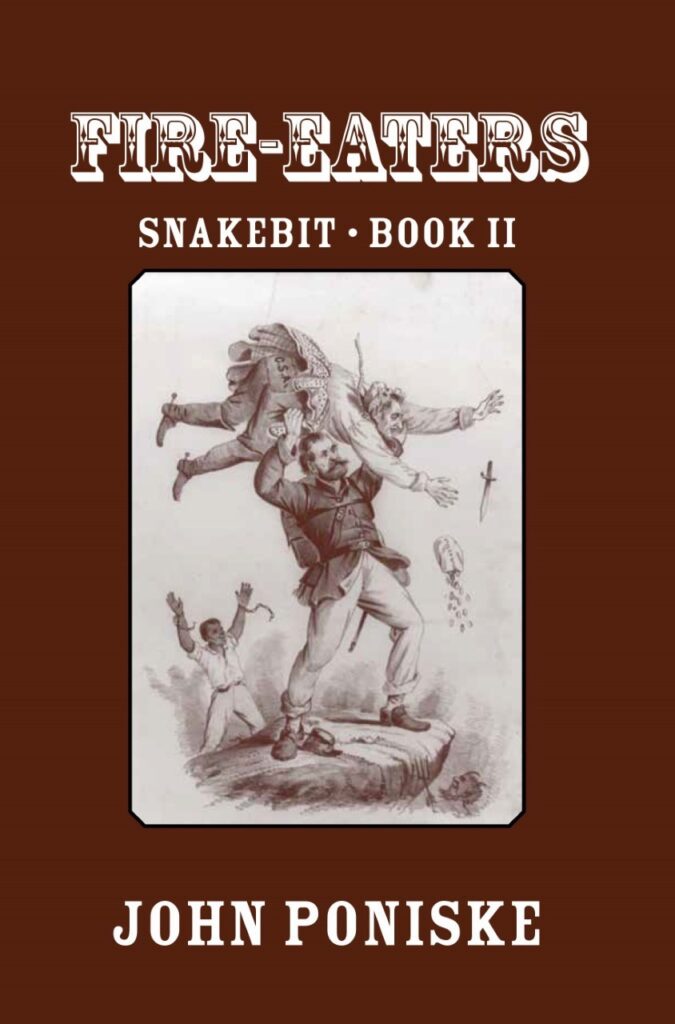
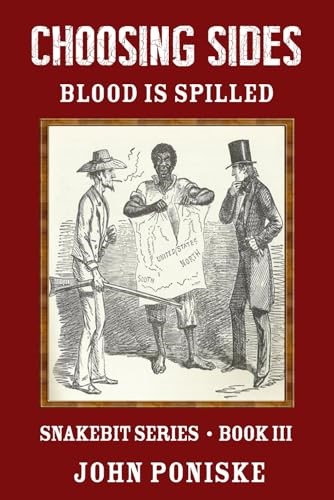
“The Crack Widens” is the fourth book in the recently published Snakebit series. Poniske plans to write up to 18 volumes to complete this fascinating story of the Garrett family’s exploits through the Reconstruction period, which ends in 1876.
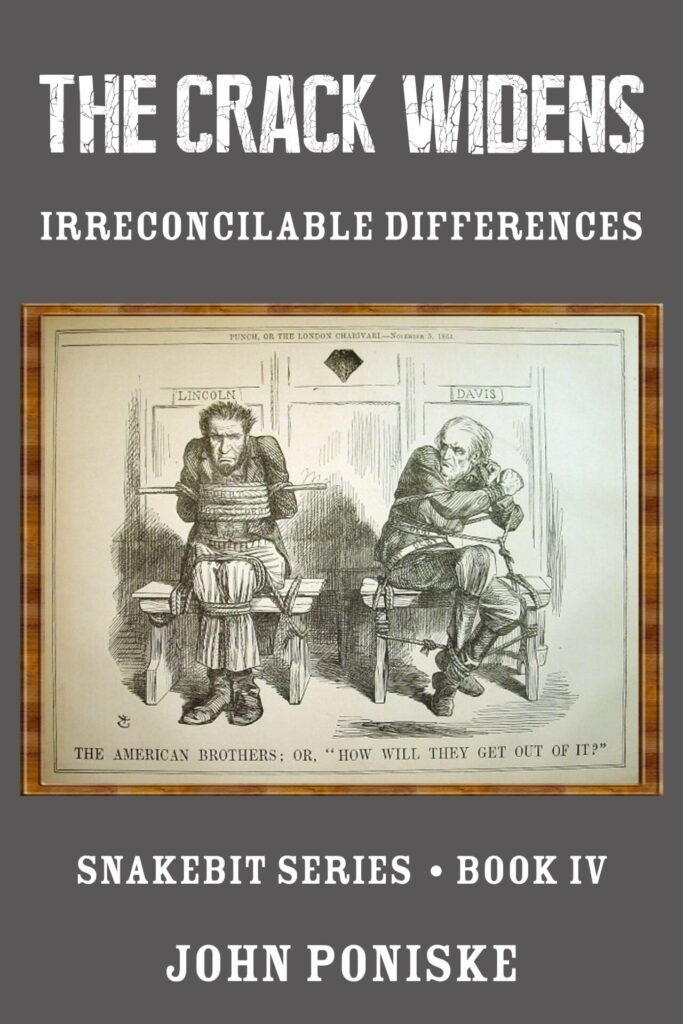
Poniske hopes to fill the Snakebit series with a unique literary role: “Most history books focus on big events, but those big pictures are based on smaller big pictures that are just as important. My books examine those parts of history. It’s a continuous story, but each chapter is a standalone story.”Poniske’s research material is mined from old newspapers, diaries, biographies and more.
John Poniske’s Snakebit books are available at Wee Scot Bookshop and Gallery 50 in Waynesboro, and online through Amazon. Poniske’s latest war game, Flanks of Gettysburg, can be ordered online at Compass Games (compassgames.com). You can learn more about his multifaceted career on his author website (johnponiske.com). An audiobook of Prelude to War, featuring Poniske’s sonorous voice, will be released soon.
